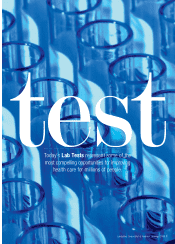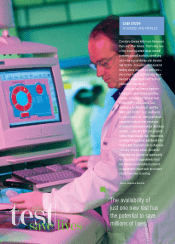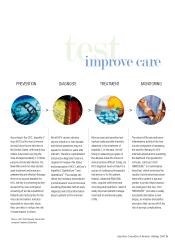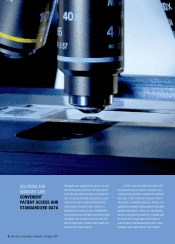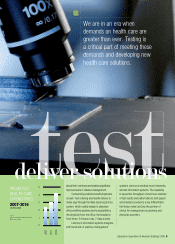LabCorp 2006 Annual Report Download - page 8
Download and view the complete annual report
Please find page 8 of the 2006 LabCorp annual report below. You can navigate through the pages in the report by either clicking on the pages listed below, or by using the keyword search tool below to find specific information within the annual report.
test
detect disease
The power of a
test to detect is
often priceless.
............................... .........
..........................................
Once, cervical cancer was among the most common causes of cancer death among American women,
but death rates dropped by 74 percent between 1955 and 1992. This dramatic decline was due to
the development and widespread application of the Pap test, which can detect changes in the cervix
before cancer develops, as well as identify cancer at its early, most curable stages.
Today, cervical cancer screening has progressed to an even higher diagnostic level. LabCorp is the
only national laboratory to offer Cytyc’s ThinPrep® Imaging System for Pap smear analysis. The system
uses computer-imaging technology to direct the technologist and pathologist to those areas of a slide that
may require greater scrutiny, making sample analysis faster and more accurate. Physicians recognize
the benefits to their patients of this Pap screening technology advancement. And today, LabCorp’s clients
choose this more sophisticated method of screening for nearly half of all liquid-based Pap smears.
Clinicians also recognize that screening for HPV, or human papillomavirus, is another valuable tool
to fight this disease. HPV is the cause of almost all cases of cervical cancer. Using advanced molecu-
lar technology, HPV testing can determine if one of the HPV virus types that causes cervical cancer is
present. HPV screening volumes grew by more than half in 2006. Together, the image-guided Pap and
HPV assays are playing important roles in reducing overall cervical cancer deaths by an average of four
percent each year.
6 Laboratory Corporation of America® Holdings 2006



